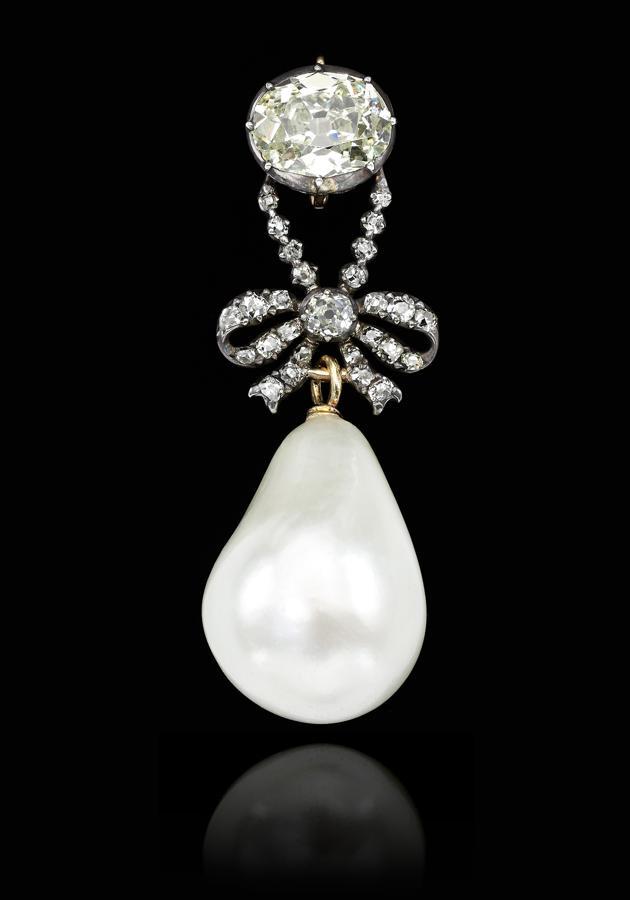They auctioned off valuable jewels that belonged to Marie Antoinette
The hammer price was 6.2 million Swiss francs, but with commission the final price was 7.46 million Swiss francs, Christie's spokeswoman Alexandra Kindermann said.
A blue velvet box labeled "Queen Marie Antoinette bangles" contains the double bangles, each comprised of three strands of diamonds and a large clasp, totaling 112 diamonds.
Marie Antoinette, who sent a letter from prison at the Tuileries in Paris saying that a wooden chest of jewels would be sent for her safekeeping, was guillotined in 1793. Her surviving daughter, Marie-Theresa, received the jewels when they arrived in Austria, according to the auction house.
Queen Marie Antoinette loved jewelery and wore it in the many portraits of her by court painters at Versailles.
The bracelets, owned by a European royal family, were expected to fetch between $2 million and $4 million, Christie's said ahead of the sale.
A Matter of Life or Death. It's important for all parents to not only know how to prevent choking, but also know wh… https://t.co/ohUUiPIStV
— Act+Fast Thu Aug 06 14:27:50 +0000 2020
An art deco ruby and diamond ring, commissioned by the Duke of Windsor from Cartier, and offered to his American wife Wallis Simpson on their first wedding anniversary by the man who renounced the British throne to marry her, was not found a new owner. The pre-sale estimate for the Duchess of Windsor's ring was 1 million to 2 million Swiss francs, according to the auction house.

The jewels "relive and transport a part of French history to the world today," says Marie-Cécile Cisamolo, associate specialist at Christie's in Geneva. What makes these diamond jewels even more exceptional is that they have not been transformed over time: they seem to have remained just as the Queen bought them, highlights the site specialized in the luxury industry "townandcountrymag.com".
Marie Antoinette's insatiable appetite for jewelry is famous. The queen, who did not care about the budget, bought the bracelets from the jeweler Boehmer for 250,000 pounds of the time. He didn't exactly have the cash to buy them, so he handed over a down payment and traded other gems. Newly discovered information by jewelery historian Vincent Meylan reveals that King Louis XVI's February 1777 personal papers read: "to the Queen: advance of £29,000 for the diamond bracelets she purchased from Boehmer." Count Mercy-Argenteau had also reported that they had been paid for in part with precious stones from the Queen's collection.
The jewels that survived the French Revolution were sold. Following the defeat of Napoleon III, the new government offered up the Crown Jewels in a famous 1887 sale, in which treasures such as large tiaras, crowns and other important jewels went to the highest bidders, including Tiffany & Co. Most of those parts were taken apart and remodeled into new designs. Something the French especially regret, because it is said that if they had survived, the French Crown Jewels would be much more valuable than the British royal jewels on display in the Tower of London.
The faithful Count Mercy-Argenteau kept the wooden crate unopened for over a year, until the Austrian court ordered an inventory of its contents: the bracelets were listed as item number 6. In 1796, when the surviving daughter of the queen, Madame Royale (1778-1851), arrived in Austria at the age of 18, received the jewels. An 1816 portrait of Madame Royal by the painter Antoine-Jean Gros shows her wearing her bracelets. He died childless in 1851 and left his jewels to be divided among his nephews: the Count of Chambord (1820-1883), the Countess of Chambord (1817-1886) and the Duchess of Parma (1819-1864).









1595